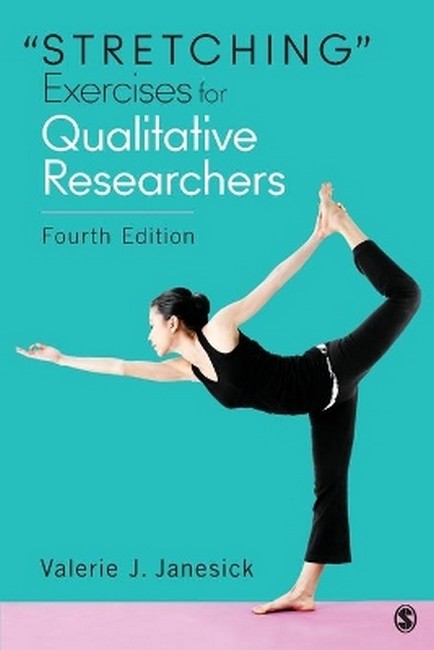Valerie J. Janesick (PhD, Michigan State University) is Professor of Educational Leadership and Policy Studies, in the department of Leadership, Counseling, Adult, Career and Higher Education, LCACHE, University of South Florida, Tampa. She teaches classes in qualitative research methods, curriculum theory and inquiry, and ethics in leadership. Her latest book, "Contemplative Qualitative Inquiry: Practicing the Zen of Research (2015) Left Coast Press, argues for the use of Zen approaches to qualitative inquiry cast as Contemplative Qualitative Inquiry. Her chapters in the Handbook of Qualitative Research (first and second editions) use dance and the arts as metaphors for understanding research. Her book, Oral History for the Qualitative Researcher: Choreographing the Story (2010), Guilford Press, incorporates, poetry, photography and the arts to capture lived experience. She serves on the editorial board of The Qualitative Report, and the International Journal of Qualitative Methods. She continues to take classes in yoga and meditation.
Request Academic Copy
Please copy the ISBN for submitting review copy form
Description
Chapter 1. Qualitative Research and Habits of Mind Identifying, Practicing, and Developing Habits Getting Feedback and Writing About It Finding Your Theoretical Habit Developing Habits of Mind Terms Used to Describe Qualitative Research Characteristics of Qualitative Work Questions Suited to Qualitative Research Methods Using Theory in Qualitative Research Artistic Approaches to Qualitative Research Contemplative Qualitative Inquiry and the Zen of Research Why Try These Exercises? How to Use This Book The Audience for This Book Suggested Resources Chapter 2. The Observation, Reflection, and Writing Habit Exercise 2.1: Observing a Still Life Scene Description of a Still Life Scene Constructing a Researcher Reflective Portfolio Types of Portfolios and Assessment How the Electronic Portfolio Works Portfolio Contents Exercise 2.2: Physical Description of This Setting Exercise 2.3: Observation in the Home or Workplace Exercise 2.4: Description of a Familiar Person or a Stranger The Qualities of Exemplary Case Studies Exercise 2.5: Observing at an Art Museum or at a Movie Exercise 2.6: Observing an Animal at Home, the Zoo, or a Pet Shop Exercise 2.7: Drawing to Become a Better Observer: Drawing Upside Down Chapter 3. Advancing the Observation, Reflection, and Writing Habit Exercise 3.1: Nonparticipant Observation Assignment Exercise 3.2: Reflecting to Strengthen the Writing Habit Exercise 3.3: Writing Your Educational Autobiography Exercise 3.4: Writing a Pedagogical Letter Next Steps: Self-Evaluation Pitfalls in Observation Chapter Summary Suggested Resources Chapter 4. The Interview and Writing Habit Two People Talking, Communicating, and Constructing Meaning Types of Interview Questions Preparing Questions Examples of Interview Questions From a Recent Study Exercise 4.1: Interviewing Someone You Know Exercise 4.2: Interviewing a Stranger Exercise 4.3: The Oral History Interview Exercise 4.4: The Focus Group Interview Demonstration Exercise Exercise 4.5: Presenting Interview Data as a Found Data Poem Exercise 4.6: Describing Your Role in a Research Project as Identity Poetry Exercise 4.7: The Digital, Virtual Interview and Google Groups Exercise 4.8: Interviewing Someone Twice Exercise 4.9: Practicing an Online Interview Conducting Qualitative Interviews: Some Rules of Thumb Chapter Summary Suggested Resources Chapter 5. The Creative Habit The Role of the Researcher and the Researcher Reflective Journal Exercise 5.1: Variations on Writing Your Name Exercise 5.2: The Camera as an Extension of the Eye, the Eye as an Extension of the Soul Exercise 5.3: Building a Collage: My Role as a Researcher Exercise 5.4: Constructing a YaYa Box or Making a Quilt Patch The Qualitative Researcher and the Intuitive Sense Exercise 5.5: Writing About Your Favorite Vegetable Serendipity Intuition, Creativity, and Compassion in Research The Researcher Reflective Journal as Creative Act Exercise 5.6: Your Journey Future Directions Exercise 5.7: Reflective Journal Writing Practice in Dialogue Form Exercise 5.8: Haiku and Any Form of Poetry on the Role of the Researcher Exercise 5.9: Framed Photograph and Narrative Writing Exercise Exercise 5.10: Writing Timeline Exercise Chapter Summary Suggested Resources Chapter 6. The Analysis Habit The Qualitative Researcher as Contemplative and Mindful Checkpoints for Data Analysis, Reporting, and Interpretation Various Approaches to Analysis and Interpretation of Data Ethics and the Qualitative Researcher True Stories: Sample Ethical Dilemmas Attributes of the Qualitative Researcher Qualitative Researchers Interacting With Institutional Review Boards, IRBs Chapter Summary Exercise 6.1: Design and Create a Cover for Your Researcher Reflective Journal Exercise 6.2: Describe Your Favorite Meal Exercise 6.3: Writing About Change in Yourself in Any Five-Year Period Chapter 7. The Technology Habit Benefits for Small-Scale Studies Using Technology The Context The Power of Skype Interviewing Next Steps: Editing Through Audacity Transcription With Express Scribe, Dragon, iTalk, iSpeak, and MS Word Voice Recognition Software Researcher Reflective Portfolios Excel as a Text/Data Analysis Tool Analysis Strategies From MS Word to MS Excel Overall Virtual Interview: From Collection to Analysis Electronic Mailing Lists, Websites, Journals, and Software Options Exercise 7.1: Conducting and Transcribing a Skype Interview Using Express Scribe for Transcription Exercise 7.2: Create a Word Cloud Using Wordle and One With Tagxedo Exercise 7.3: Create a Glog, a Poster Online Through Glogster Chapter Summary
"Stretching" Exercises for Qualitative Researchers is an important text, and a must have for qualitative researchers. For my students-and myself-the opportunities to deepen the creative self provide essential tools for broadening our horizons of understanding and approaches to our participants, our work, and ourselves. -- Dave Shen-Miller Research methods is a rigorous and over-rational man sitting in a pond. People are afraid of him and hold him in awe. No one invites him to dance. But Valerie J. Janesick did, because he saw his emotion, his passion, and his possibility to be a dancer. -- Wenfan Yan

